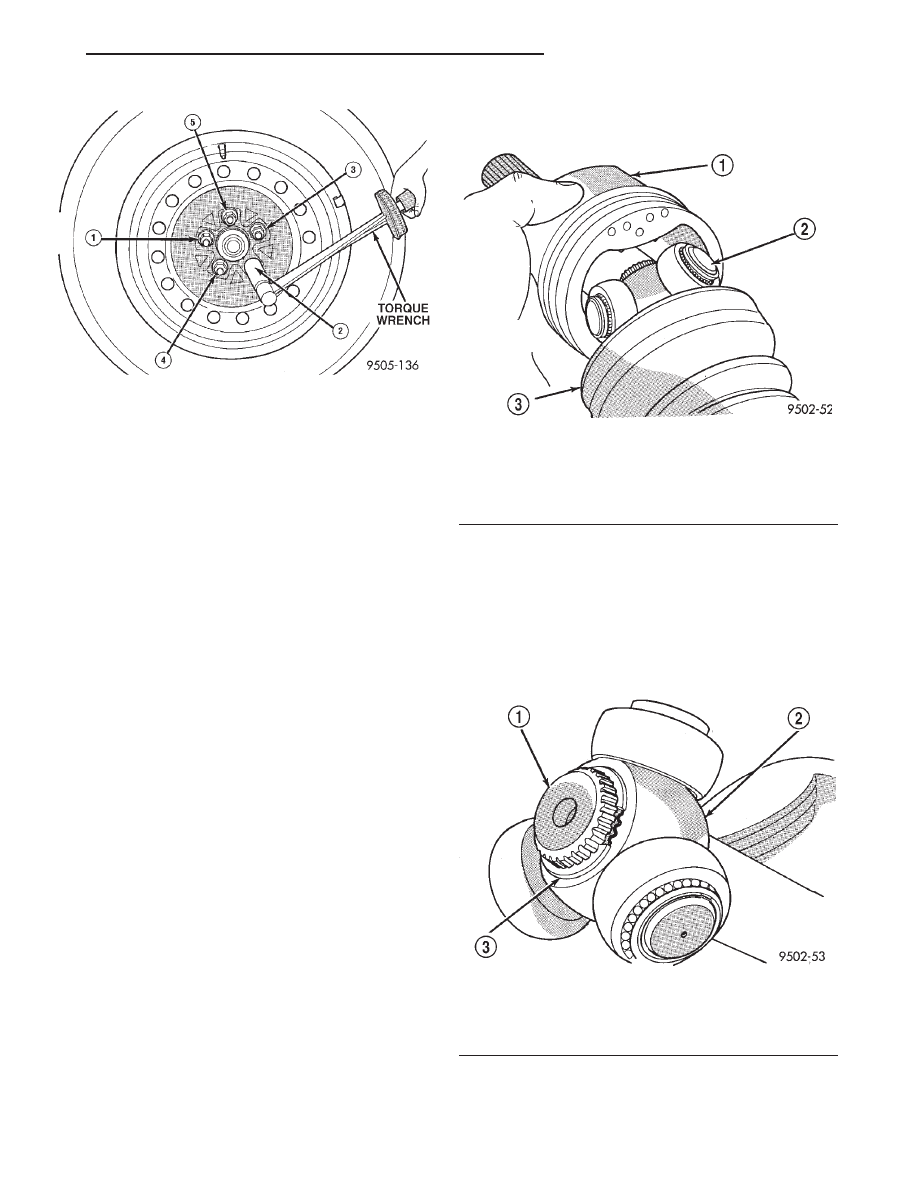Chrysler Stratus Convertible. Manual - part 182

(16) Lower vehicle.
(17) Check for correct fluid level in transaxle
assembly. Refer to Group 21, Transaxle for the cor-
rect fluid level checking procedure for the type of
transaxle being checked.
(18) Set front toe on vehicle to required specifica-
tion.
DISASSEMBLY AND ASSEMBLY
INNER TRIPOD JOINT SEAL BOOT
REMOVAL
To remove sealing boots from driveshafts, the
driveshaft assemblies must be removed from the
vehicle. See Servicing Driveshaft for the required
driveshaft removal and replacement procedure.
The inner tripod joints use no internal retention in
the tripod housing to keep the spider assembly in the
housing. Therefore, do not pull on the interconnect-
ing shaft to disengage tripod housing from transmis-
sion stub shaft. Removal in this manner will cause
damage to the inboard joint sealing boots.
(1) Remove the driveshaft requiring boot replace-
ment from the vehicle. See Servicing Driveshaft for
the required driveshaft removal procedure.
(2) Remove large boot clamp which retains inner
tripod joint sealing boot to tripod joint housing and
discard. Remove small clamp which retains inner tri-
pod joint sealing boot to interconnecting shaft and
discard. Remove the sealing boot from the tripod
housing and slide it down the interconnecting shaft.
CAUTION: When removing the tripod joint housing
from the spider assembly, hold the bearings in
place on the spider trunions to prevent the bearings
from falling away.
(3) Slide the tripod joint housing off the spider
assembly and the interconnecting shaft (Fig. 26).
(4) Remove snap ring which retains spider assem-
bly to interconnecting shaft (Fig. 27). Remove the
spider assembly from interconnecting shaft. If spider
assembly will not come off interconnecting shaft by
hand, it can be removed by tapping spider assembly
with a brass drift (Fig. 28). Do not hit the outer
tripod bearings in an attempt to remove spider
assembly from interconnecting shaft.
(5) Slide sealing boot off interconnecting shaft.
Fig. 25 Wheel Lug Torquing Sequence
Fig. 26 Spider Assembly Removal from Tripod Joint
Housing
1 – TRIPOD JOINT HOUSING
2 – SPIDER ASSEMBLY
3 – SEALING BOOT
Fig. 27 Spider Assembly Retaining Snap Ring
1 – INTERCONNECTING SHAFT
2 – SPIDER ASSEMBLY
3 – RETAINING SNAP RING
JX
DIFFERENTIAL AND DRIVELINE
3 - 9
REMOVAL AND INSTALLATION (Continued)